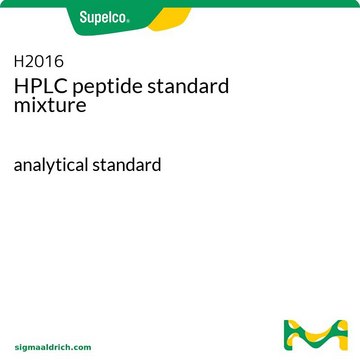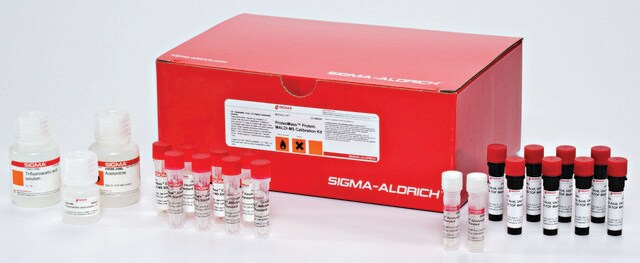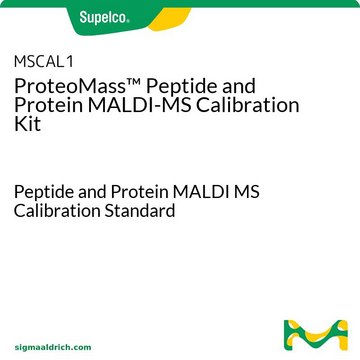MSP1L
MS PhosphoMix 1 Light
Phosphopeptide Standard for MS
Sinonimo/i:
Light PhosphoMix, PhosphoMix 1 Light
About This Item
Prodotti consigliati
Qualità
Phosphopeptide Standard for MS
Livello qualitativo
Classi chimiche degli analiti
amino acids, peptides, proteins
Confezionamento
pkg of 200 pmol total phosphopeptides
tecniche
HPLC: suitable
LC/MS: suitable
applicazioni
food and beverages
Formato
multi-component solution
Temperatura di conservazione
−20°C
Descrizione generale
Each of the three phosphopeptides mixes are available in their naturally occurring isotopic abundances (light) or as stable isotope enriched versions (heavy), making the set of products highly amenable to quantitative analyses, allowing users to compare recovery between workflows or techniques.
- Naturally occurring peptide sequences
- Broad range of peptide characteristics
- Complementary product designs
- Available in light and heavy versions
More info and FASTA file
Prodotti correlati
Codice della classe di stoccaggio
11 - Combustible Solids
Classe di pericolosità dell'acqua (WGK)
WGK 3
Punto d’infiammabilità (°F)
Not applicable
Punto d’infiammabilità (°C)
Not applicable
Certificati d'analisi (COA)
Cerca il Certificati d'analisi (COA) digitando il numero di lotto/batch corrispondente. I numeri di lotto o di batch sono stampati sull'etichetta dei prodotti dopo la parola ‘Lotto’ o ‘Batch’.
Possiedi già questo prodotto?
I documenti relativi ai prodotti acquistati recentemente sono disponibili nell’Archivio dei documenti.
I clienti hanno visto anche
Il team dei nostri ricercatori vanta grande esperienza in tutte le aree della ricerca quali Life Science, scienza dei materiali, sintesi chimica, cromatografia, discipline analitiche, ecc..
Contatta l'Assistenza Tecnica.















